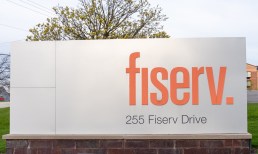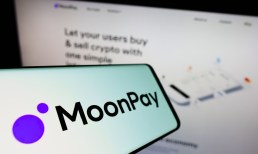There are many ways to log the changes in the payments ecosystem over the last decade and a half. One could look to the point of sale changes like EMV or NFC, or the various omnichannel upgrades like order ahead or buy online and pickup in store. There are dozens and possibly even hundreds of hardware and software changes big and small that have shifted, expanded and grown the boundaries of how a consumer can pay for the goods and services they want to buy from a merchant.
In the tangle of those details it can be easy to overlook perhaps the single biggest change to the payments ecosystem that Cayan co-founder and CEO Henry Helgeson told MPD CEO Karen Webster he’s observed: the POS industry no longer calls the shots.
“If you look at the terminal industry, the segment that powers of the point of sale – 10 to 15 years ago, we told our customer – the channel — what they wanted,” Helgelson remarked. “Now they are telling us what they want and we build it. Today, we build for our customer’s customer.”
The point of sale, Helgeson told Webster, once taken for granted as a “necessary evil” in a store where customers would line up and checkout – and perhaps while there buy a magazine or some candy while waiting — has become something of a canvas onto which merchants are now able to construct a much fuller experience. And – now that EMV is a settled argument but for the deployment – Helgeson says that POS solution providers have a rare opportunity to help them get to that next phase.
“For a while it was nothing but conversations about EMV – finally, that conversation has shifted to now meeting the needs of a merchant that wants to serve an omnichannel customer,” Helgeson told Webster.
A shift that is complicated on every single dimension since nothing in payments ever goes away – we just keep adding new methods and tender types.
Advertisement: Scroll to Continue
New Technology Doesn’t Replace Old Technology – It Has To Build Over Top
Helgeson observed that payments players would like it much better if everyone would just make the jump to digital already – and leave their plastic and cash behind as relics of the past. But, as we know just looking around in the line at your favorite merchant, not everyone is an early adopter – or even part of the late majority. The implication is that in payments, things have a tendency to hang around for a long, long time.
“To give you an example, four of our guys had to spend months of their life this year updating check processing for a client,” Helgeson explained. “It was kind of a running joke, we are talking about moving to mobile and I’ve got guys working on checks because our merchants do not want to lose those sales associated with checks. It may only be 1 or 2 percent of their volume, but that is material to them.”
And, that means that it’s all material to merchants, which Helgeson emphasized means being flexible enough to accept the old and enable the new — opening up the set of options merchants might like to be associated with.
“We might want to see plastic go away, but it’s not happening for a long while. And because of that we need EMV readers, and mag stripe devices and PIN pads — all of it,” Helgeson said.
Why Payments Needs To Think Like Tesla
That suggests that the real POS secret weapon, Helgeson believes, is flexibility.
“There has to be a hardware capability to do anything at the point of sale with just a software update,” Hegleson told Webster. “That means merchants don’t have to look for a new/better upgrade every 18 months – capabilities are software-driven, not device-dependent.”
If this sounds familiar, it should, Helgeson noted. It’s how Tesla designs its cars. Tesla engineers state-of-the-art hardware, and then upgrades the software to add new features and functions. Helgeson says that it should be the same thing in payments: get a well-engineered physical device out there that can be updated with software as the new features and functions that help merchants run their businesses become available.
That solves two problems, Helgeson noted. One, changing POS hardware at merchants – especially large merchants – is a good deal more painful than buying a new car. It can take a year or more for a large retailer to get new payments terminals in and operational after inking a contract to do so. And two, that is an expensive and time-consuming disruption to the business every time a new POS mousetrap is introduced into the market.
The New Experience
Across the ecosystem, both merchants and consumers are being asked to change. In restaurants, for example, customers who are long used to signing a discreet white slip of paper and privately filling out a “tip” line are being faced with the prospect in an EMV world of being presented with an unattractive POS device by their server who awkwardly waits while a tip is added.
The guiding principle, says Helgeson, is giving the consumer the chance to interact with technology under the right terms.
“The technology now can actually enhance the checkout experience – and make it a positive. If we do it right, merchants will be able to deliver a better experience that a consumer will want to gravitate to.”
And for the merchant, the new checkout future will mean a new orientation toward a unified front, particularly as they increasingly meet their consumers in an omnicommerce world.
“The first thing that a merchant has to do to deliver that is to drive everything through a single platform,” Helgeson emphasized. “Merchants can’t have separate systems for back office, eCommerce and the call center. We also have to share data without sharing card numbers. If a merchant can’t do that, they’re out of the omnichannel game.”
And even once that is cleared, the challenges continue. Merchants may have to adapt their product and merchandising strategies to reflect how consumers want to shop and buy, even if it means giving up impulse sales in higher margin areas like in-store checkout lanes.
“Retailers are always trying to make it easier for the consumer and it’s competitive. Consumers have a finite number of dollars to spend every month, which means it’s not about the product, it’s about the experience of buying,” Helgeson noted.
Cayan thinks it is well-positioned to help improve that experience of buying by giving retailers a POS platform that helps them deliver the kind of tailored payment experience they need to satisfy their very specific customer bases.
“We want to help eliminate the pain points that merchants are facing around POS and POS decisions by helping them get in front of those decisions before they are faced with having to make them.”




